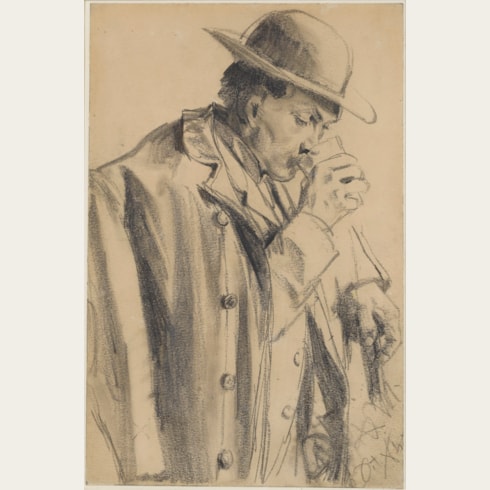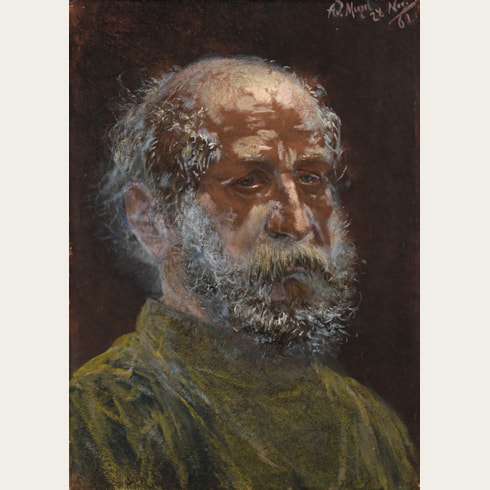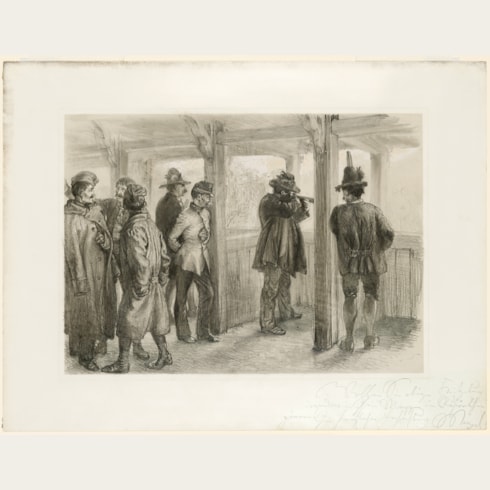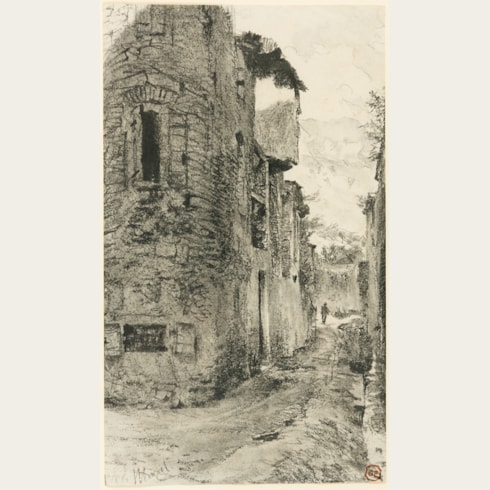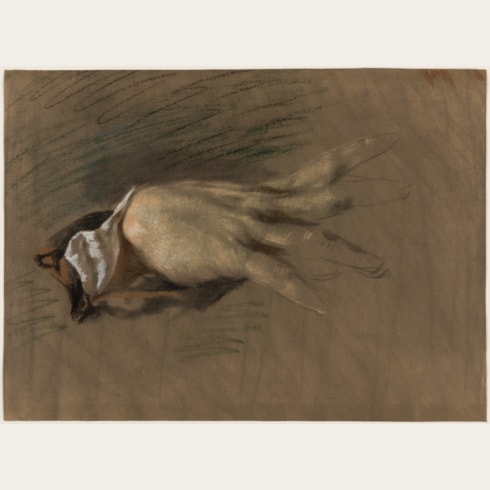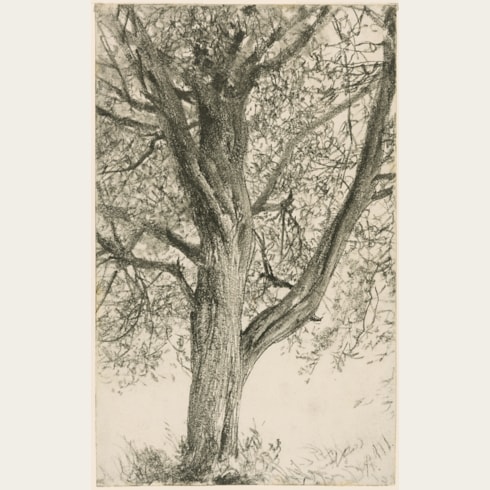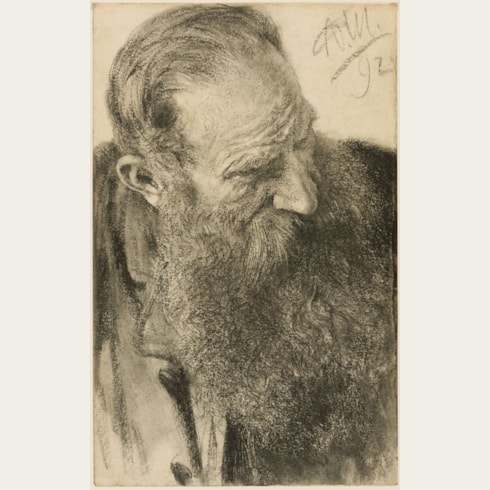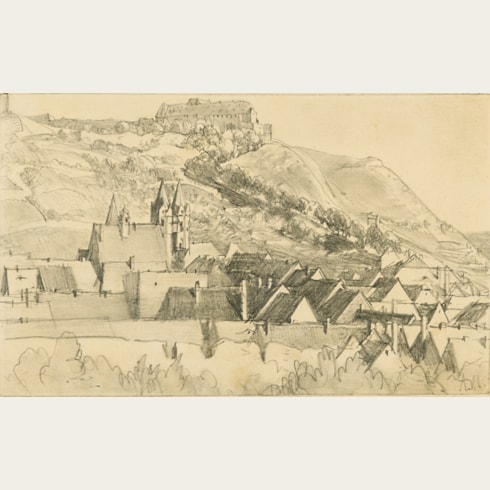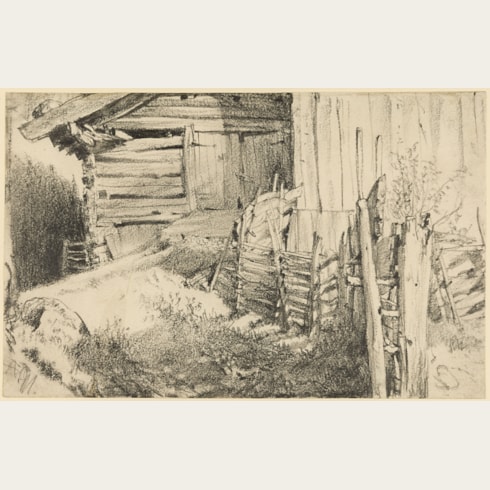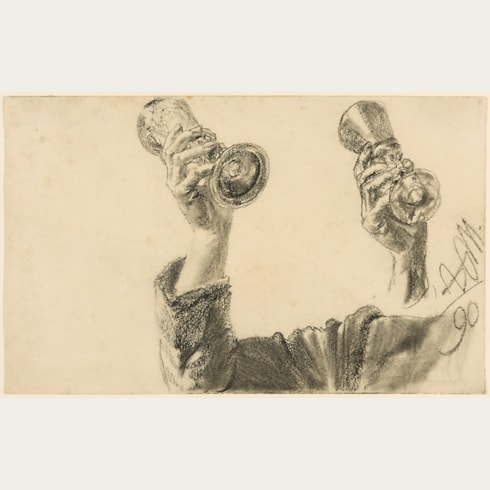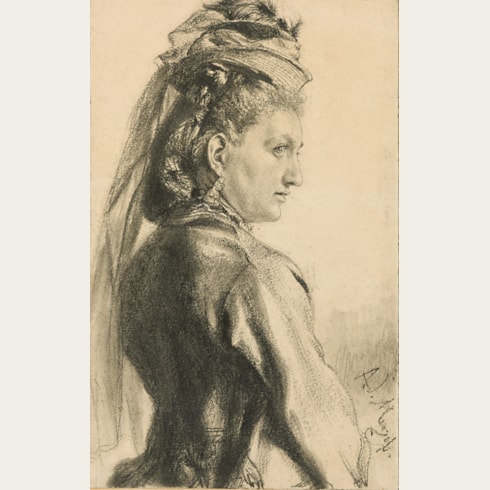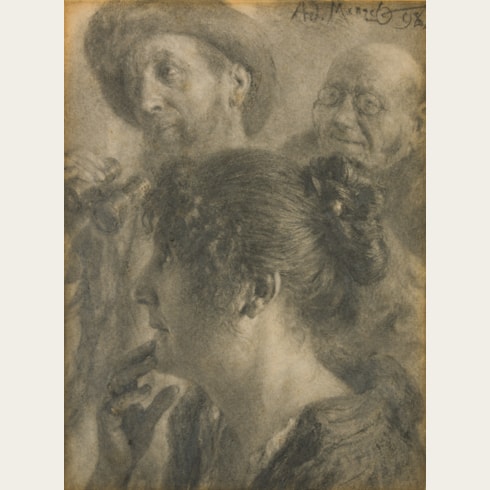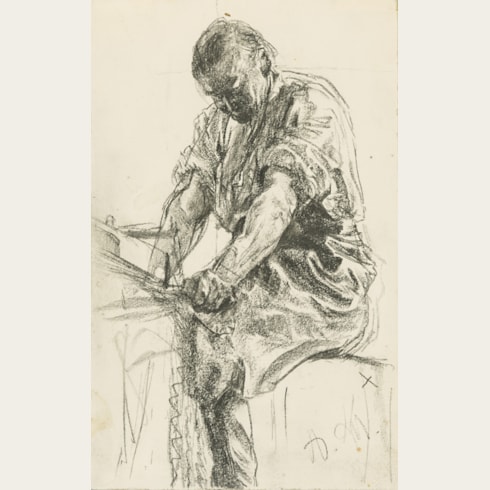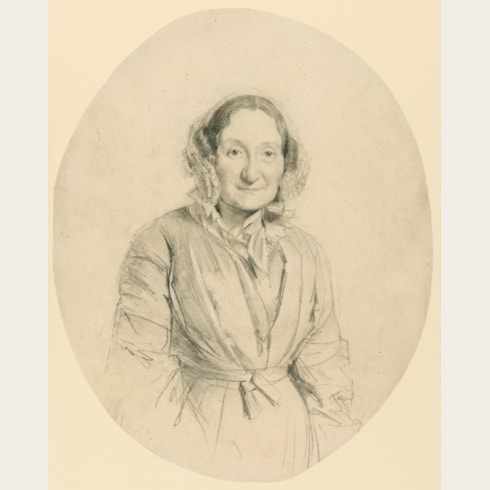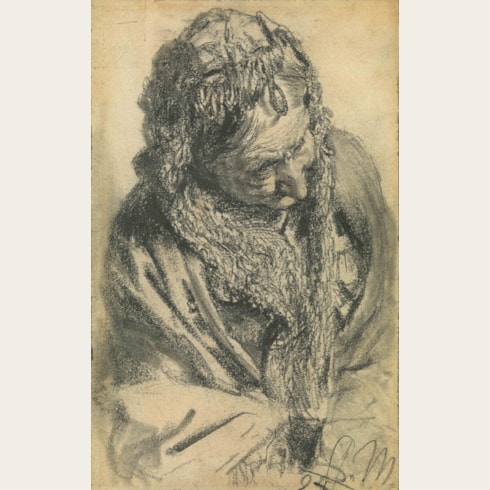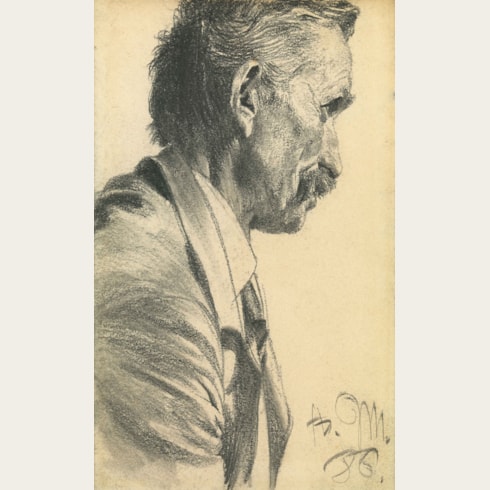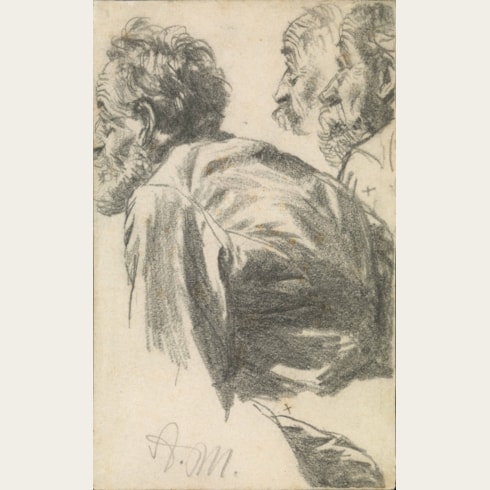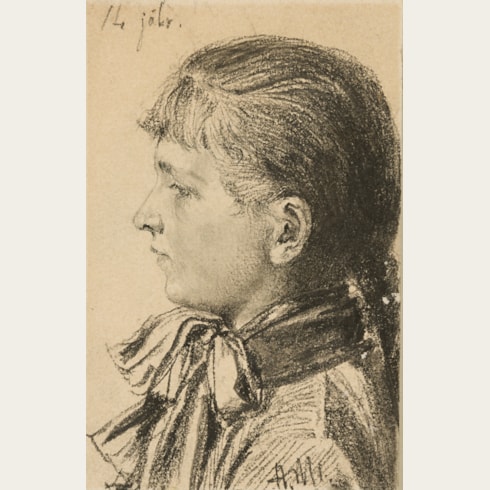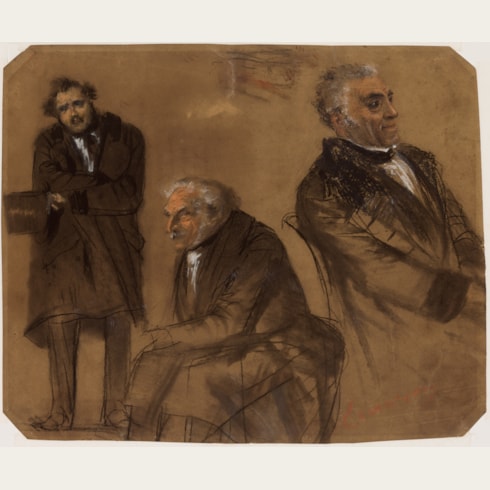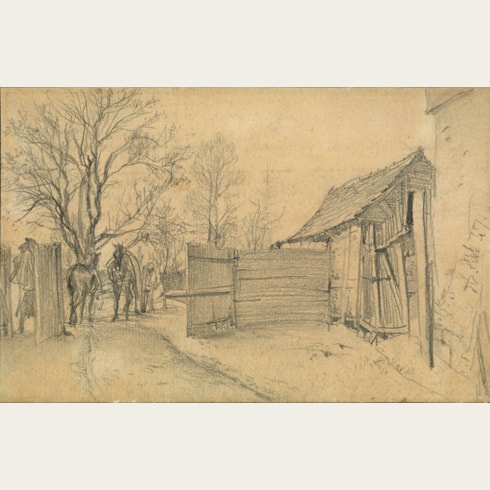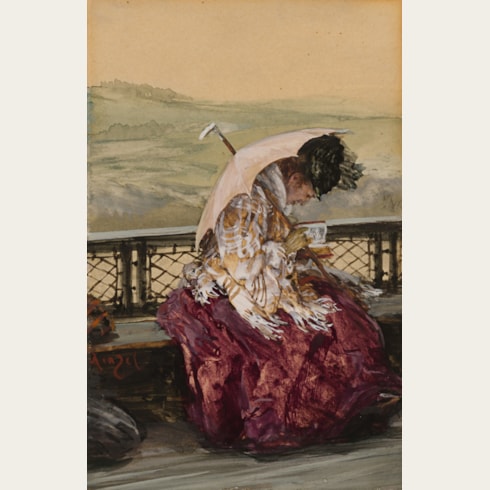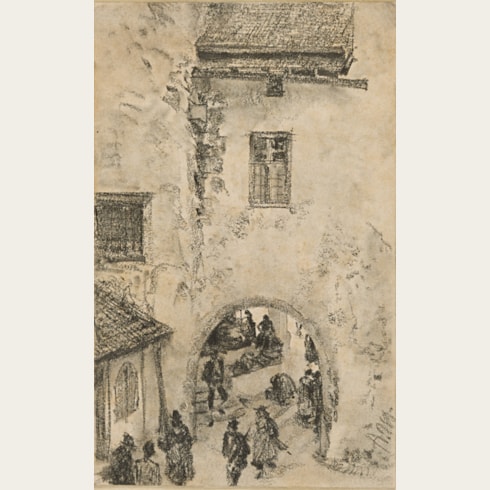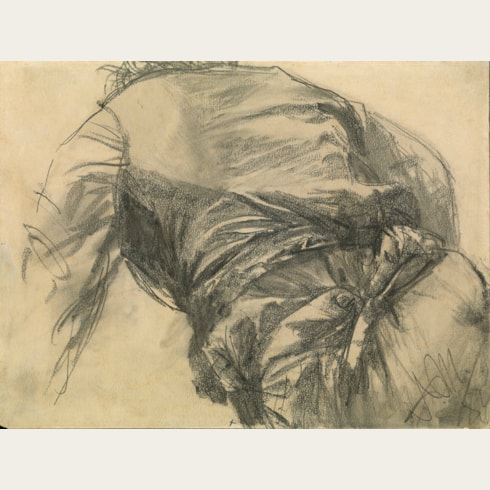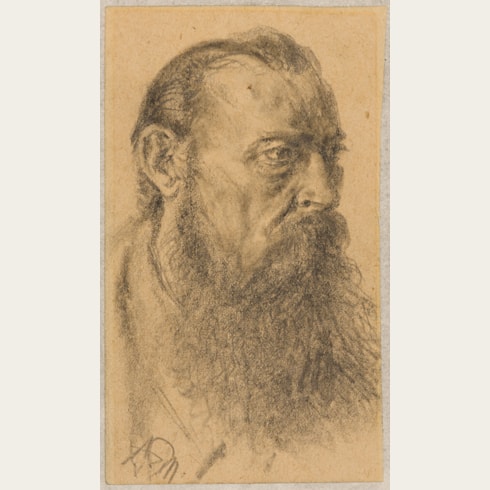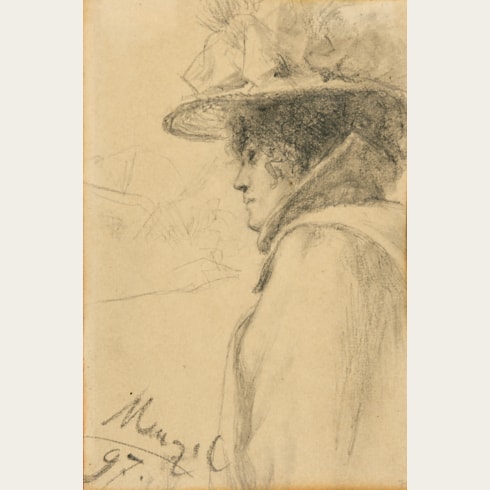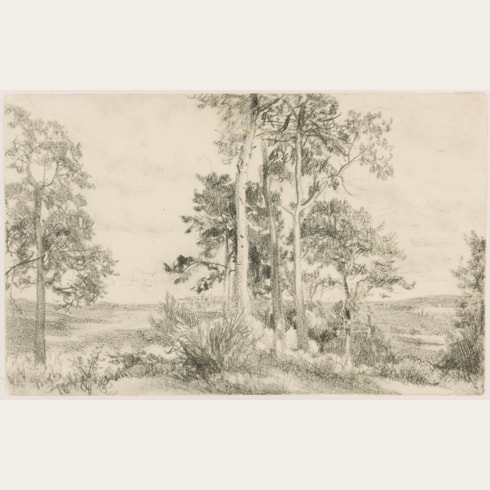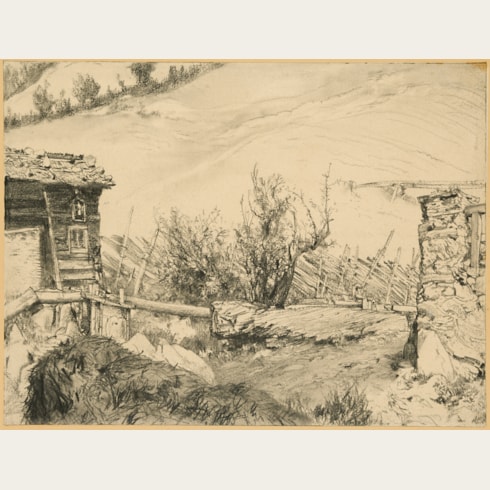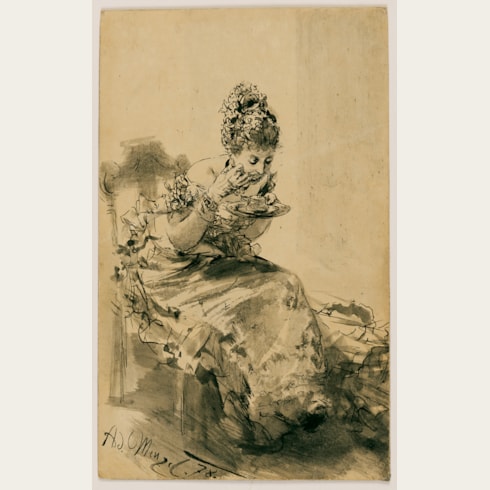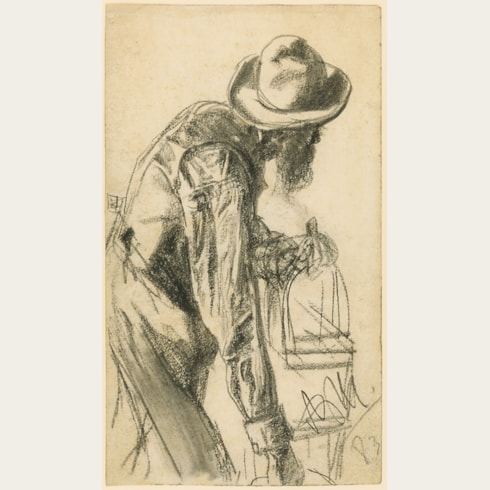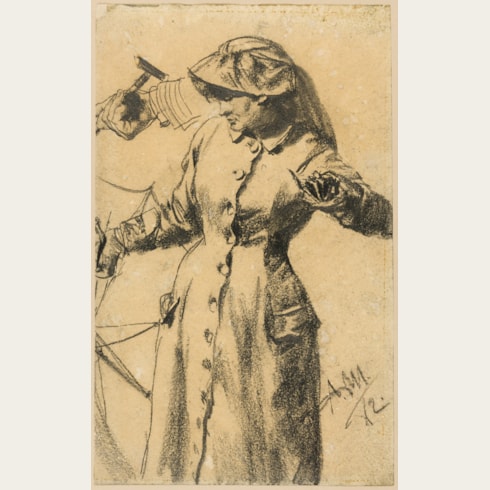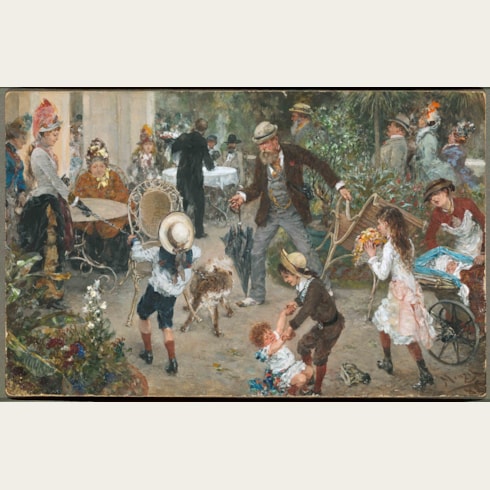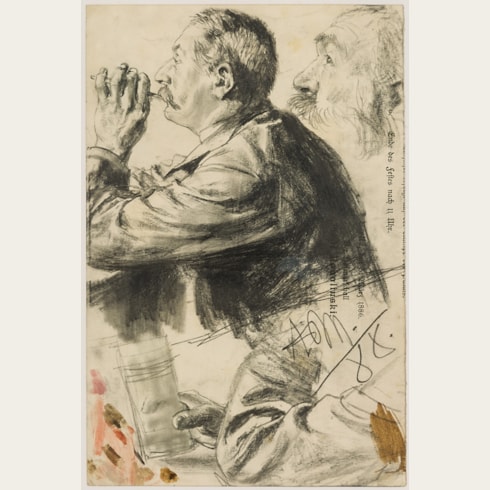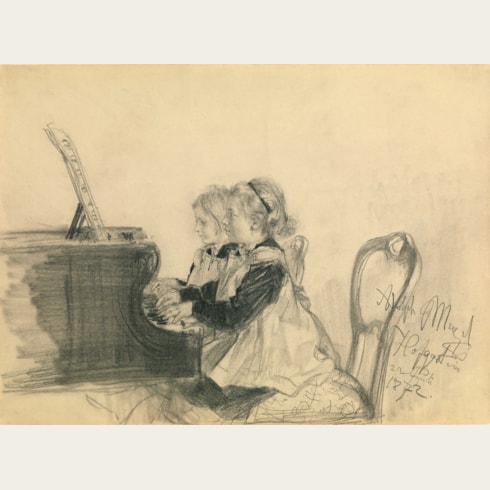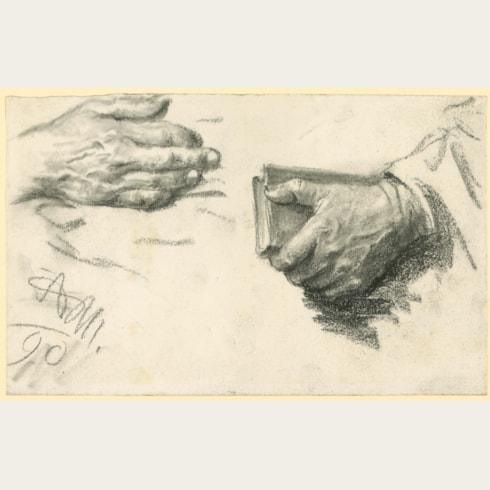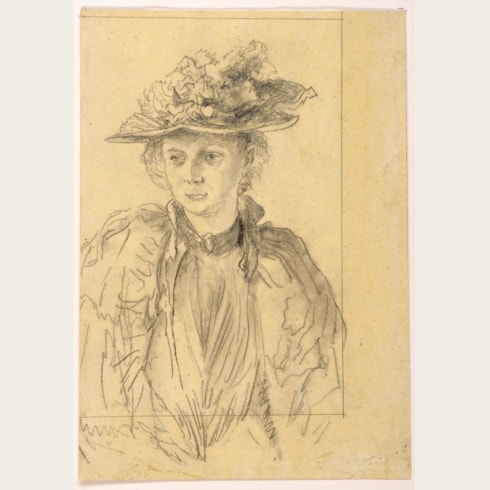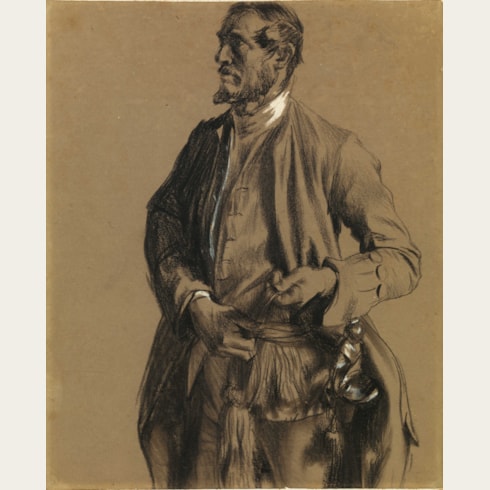Adolph MENZEL
(Breslau 1815 - Berlin 1905)
A Bearded Man Looking Down to the Left
Signed with initials and dated A.M. / 91 at the lower left.
206 x 130 mm. (8 1/8 x 5 1/8 in.)
Dated 1891, the present sheet is an especially fine example of the late drawings of heads that were much admired by Menzel’s contemporaries, critics and collectors. The treatment of the hair and beard, drawn with very fine pencil strokes, as well as the soft stumped areas of the face and clothing, are a particular feature of these character studies. Like many of Menzel’s late drawings, this striking study of an elderly bearded man, drawn with considerable assurance and dexterity, cannot be related to any painting or gouache by the artist, and was in all likelihood executed for its own sake.
The first owner of this drawing was the Austrian industrialist Moritz Edler von Kuffner (1854-1939), a brewer and property developer who was one of the most significant Viennese collectors of the 19th century. (He was also a prominent and gifted mountaineer.) Von Kuffner assembled a very fine collection of drawings by Menzel, as well as drawings by Jacopo Ligozzi, Rembrandt, Rudolf von Alt, and others. (The Menzel drawings in the collection were noted by Hans Tietze in his magisterial book on the artworks of Vienna, published in 19084.) Such was the renown of the Menzel drawings in the Kuffner collection that at one point thirteen sheets by the artist were earmarked for acquisition by the curator of the Albertina in Vienna, Otto Benesch. However, all but one of the drawings were eventually returned to the family in July 1938, shortly before they were forced to emigrate to Switzerland, following the Anschluss. The drawings were inherited by Moritz’s son Stephan Kuffner (1894-1976), and eventually passed to his niece, Vera von Kuffner Eberstadt (1928-2014).
Adolph Friedrich Erdmann von Menzel began his career working in his father’s lithography shop in Breslau (now Wroclaw in Poland) and later in Berlin, where his family moved in 1830. A brief period of study at the Akademie der Künste in Berlin in 1833 seems to have been the sum total of his formal training, and he is thought to have taught himself how to paint. At the outset of his career he worked as an illustrator, his activity in this field perhaps best exemplified by a series of some four hundred designs for wood engravings produced to accompany Franz Kugler’s History of Frederick the Great, published in instalments between 1840 and 1842. During the late 1840’s and 1850’s he was occupied mainly with a cycle of history paintings illustrating the life of Frederick the Great.
In 1861 Menzel received his most important official commission, a painting of The Coronation of King William I at Königsberg, on which he worked for four years. In the following decade, his lifelong interest in scenes of contemporary life culminated in what is arguably his masterpiece as a painter; the large canvas of The Iron Rolling Mill, painted between 1872 and 1875 and immediately purchased by the National-Galerie in Berlin. The last three decades of his career saw Menzel firmly established as one of the leading artists in Germany, a prominent figure in Prussian society and the recipient of numerous honours including, in 1898, elevation to the nobility. In the late 1880’s he began to abandon painting in oils in favour of gouaches, although old age meant that these in turn were given up around the turn of the century. Yet he never stopped drawing in pencil and chalk, able always to find expression for his keen powers of observation. A retrospective exhibition of Menzel’s work, held at the National-Galerie in Berlin a few weeks after the artist’s death in 1905, included more than 6,400 drawings and almost 300 watercolours, together with 129 paintings and 250 prints.
A passionate and supremely gifted draughtsman, Menzel was equally adept at watercolour, pastel, gouache and chalk. He was also able to draw with either hand, although he seems to have favoured his left. An immensely prolific artist (over four thousand drawings by him, together with 77 sketchbooks, are in the collection of the Nationalgalerie in Berlin alone), it is said that Menzel was never without a sketchbook or two in his pocket. His friend Paul Meyerheim described the artist’s appearance: ‘In his overcoat he had eight pockets, which were partially filled with sketchbooks, and he could not comprehend that there are artists who make the smallest outings without having a sketchbook in their pocket…an especially large pocket was installed…to hold a leather case, which held a pad, a coupe of shading stumps and a gum eraser.’ Menzel was widely admired as a draughtsman by his contemporaries, both in Germany and abroad, and Edgar Degas, for one, is known to have owned at least one drawing by him.
Provenance
His son, Stephan von Kuffner
Thence by descent to Moritz von Kuffner’s granddaughter, Vera von Kuffner Eberstadt, New York.






